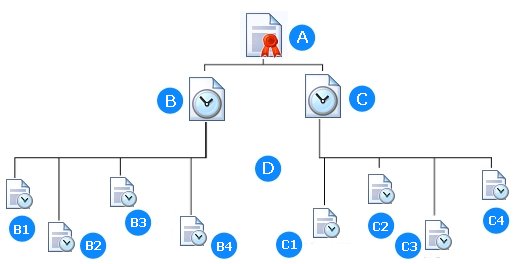Response levels
A Response Level describes what should be done, how soon, and what will occur if it does not happen in time. This can be expressed either as a set of escalation definitions, or as a process description which will itself contain similar escalation information associated with each status in the process. Response Levels and escalations determine how urgent a particular item is.
Example Response Level:

|
A |
Response Level STANDARD |
(D) Escalation Actions... |
|
B |
Escalation FIRST RESPONSE Escalation Time 1 hour |
B1 - 10 minutes before breach - Notify Assignee B2 - At Breach - Raise priority B3 - 30 minutes after breach - Reassign B4 - 30 minutes after breach - Notify Group |
|
C |
Escalation PROVIDE WORKAROUND Escalation Time 4 hours |
C1 - After 75% - Raise priority C2 - At Breach Time - Raise Priority C3 - At Breach Time - Notify Assignee C4 - At Breach Time - Notify Account Manager |
The Response Levels you create, and their associated escalations and escalation actions, can be combined and used in a variety of ways to meet a number of business requirements, as detailed below.
Response Agreements (RAs) – RAs are agreements between the end-user (or customer) and the service desk.
Operational Level Agreements (OLAs) – OLAs are agreements between the service desk and other internal groups involved in providing support. For example, the service desk could have an OLA with the procurement department detailing how quickly they will arrange the purchase of new hardware.
Underpinning Contracts (UCs) – UCs are agreements between the IT department and external suppliers. For example, you could have a UC with your hardware supplier detailing how quickly new hardware is delivered after receiving a purchase order.